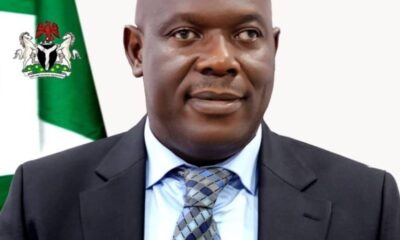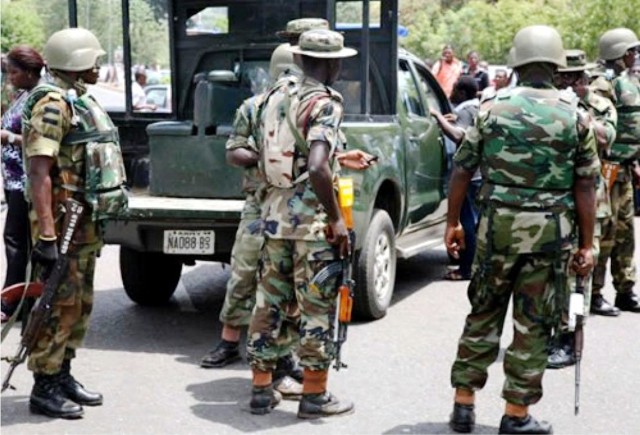Opinion
Stop The Senseless Attack
Much as I try to wrap my head around the continuous attack on security agencies and destruction of public facilities in the South-East geopolitical zone of Nigeria by the so-called “unknown gunmen’’, it is difficult to comprehend why an area that was peaceful a few months ago is today almost the epicenter of the unabating crisis in the country.
From available records, no fewer than 35 police stations have been burnt or destroyed and over 40 policemen killed in the last couple of months majorly in the South Eastern region and a couple of places in the South-South. Last Monday, gunmen were said to have killed two policemen and set Ubakala Police Station, along with some patrol vehicles, ablaze in Umuahia South Local Government Area of Abia State. That took place five days after Bende Police Station was set on fire and weeks after Ubani Ibeku all in Abia State was burnt down.
We have been crying that the number of policemen in the country is grossly inadequate and every day the few we have are being eliminated while carrying out their duty of protecting the citizens? Young women are made widows, many children become fatherless because of the senseless attacks.
What really is going on in the South East? We have heard some people blame the criminality on the proscribed Indigenous People of Biafra (IPOB) and its armed wing, the Eastern Security Network (ESN).
Many have also claimed that the attackers might have come from outside Igboland, and sponsored to cause trouble in the South East, so as to find reason to invade and attack the area. Others, like the Governor of Imo State, Senator Hope Uzodimma, have attributed the unfortunate happenings to politics, blaming members of opposition political parties for sponsoring all the attacks in his state. So, thorough investigation may be needed to unravel those behind the ugly incidents.
But the big question still remains; how can the traditional, political and religious leaders in the East allow a handful of persons to destabilise the region? Let’s assume that the attacks and killings are carried out by paid outsiders as erroneously or rightly claimed by some people, what have the Igbo youth, the Ohaneze Ndi Igbo, traditional rulers, town unions, age grades, women groups, the elites and other organised bodies and reasonable individuals from Igboland done to stop such invasion of their communities? Or are they just folding their arms and allowing these criminals to continue having their way?
Again, supposing that the perpetrators of the heinous crime are be people from the zone, belonging to certain groups, committing these atrocities under the guise of freedom fighters, have the groups earlier mentioned and governments of the various states in the region taken any measures to halt their wicked actions that are not doing the image of Igboland any good or they are being cheered for taking it out on the federal government, their perceived enemy?
Of course, many people from the South East, just like people from other parts of the country, may not like the leadership style of President Muhammadu Buhari; they may not be happy with the nepotism, sectionalism, tribalism, injustice and unfairness that have characterised Buhari’s government; they may be sad about the unending insecurity in the land that has claimed the lives of many Nigerians, the increasing economic hardship in the country, the insensitivity of the government to the plights of the citizens. But is attack on police formations and officers and destruction of INEC offices and the few available federal government structures in the zone the answer? Is there no better, legitimate way of getting government’s attention than being violent and destructive?
I can’t stop wondering how Abuja is going to feel the pain of these destruction. Rather, the communities and the states at large will lose being that the money that would have been used for other profitable ventures in the zone will be used to repair the buildings and replace the damaged vehicles.
Besides, the easterners will be the ones left at the mercy of armed robbers, bandits, kidnappers, car snatchers, thieves, pick pockets and other criminals should the Nigeria Police Force (NPF) decide to withdraw policemen from the region just as they recently ordered the withdrawal of police personnel attached to governors and other VIPs from the area.
Therefore, one thinks that it’s high time the Igbos, both young and old, men and women, within Nigeria and in the diaspora put heads together to stem the criminalities in the region. They should join hands to stop any attempt whether by outsiders or insiders aimed at making Igboland a lawless region.
Governors of the five South Eastern States should put their selfish interests and political ambitions aside and take decisive steps to protect their people. Yes, they have floated a regional security outfit – Ebubeagu, to flush out criminals in the zone but without them sincerely working together as one body to pursue this course, without giving Ebubeagu all the necessary legal, financial and moral support it needs, the outfit will remain what some say it is, “a toothless bull dog”.
Meanwhile, one must commend the NPF for last Tuesday’s launching of a new special operation, Operation Restore Peace, to help in bringing back peace to the South East and South South. It is timely. We hope that the Armed forces personnel, the intelligence community and other security agencies working in collaboration with the police in this operation will be professional in the discharge of their duties. They should not make the situation worse than it currently is through brutality, harassment and intimidation, inhumanity to innocent citizens and arresting of people who committed no crime.
Nigerians await the replication of Operation Restore Peace in other parts of the country to address their peculiar crime as assured by the Acting Inspector General of Police (IGP), Usman Baba. This will prove that the operation is not meant to ill-treat any region. There is no doubt that if this manner of firm action had sincerely been taken against the Boko Haram insurgency group, herdsmen, bandits and other criminals that have troubled the North West and other parts of the country for several years, Nigeria wouldn’t have been in the current mess.
By: Calista Ezeaku
Opinion
Ndifon’s Verdict and University Power Reform

Opinion
As Nigeria’s Insecurity Rings Alarm

Opinion
The Girl Who Didn’t Dance
-

 Featured4 days ago
Featured4 days agoOil & Gas: Rivers Remains The Best Investment Destination – Fubara
-
Nation5 days ago
MOSIEND Calls For RSG, NDDC, Stakeholders’ Intervention In Obolo Nation
-
Nation5 days ago
Hausa Community Lauds Council Boss Over Free Medical Outreach
-

 Nation5 days ago
Nation5 days agoOgoni Power Project: HYPREP Moves To Boost Capacity Of Personnel
-
Nation5 days ago
Film Festival: Don, Others Urge Govt To Partner RIFF
-
Nation5 days ago
Association Hails Rivers LG Chairmen, Urges Expansion Of Dev Projects
-

 News5 days ago
News5 days agoNDLEA Arrests Two, Intercepts Illicit Drugs Packaged As Christmas Cookies
-

 News5 days ago
News5 days agoTroops Rescue 12 Abducted Teenage Girls In Borno

